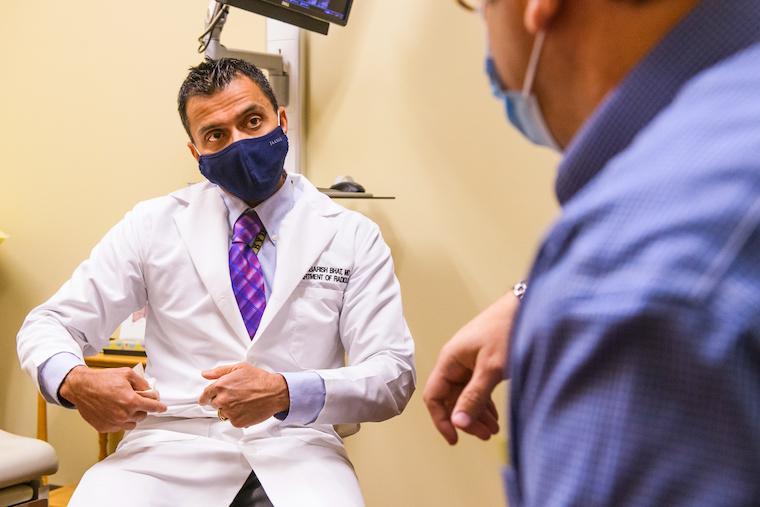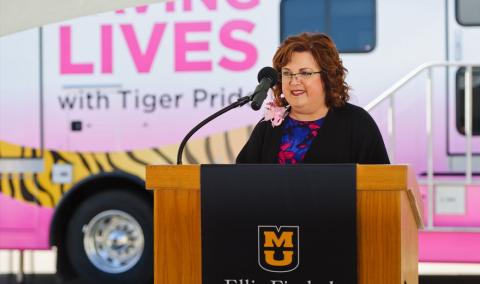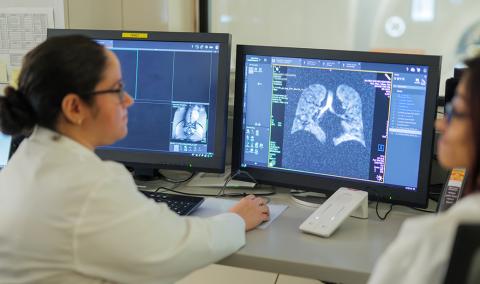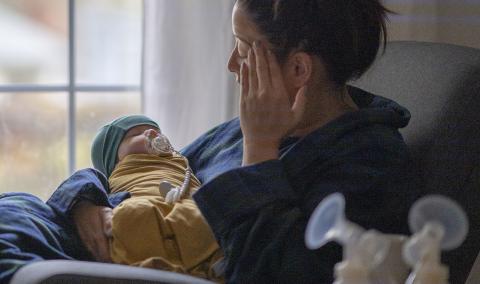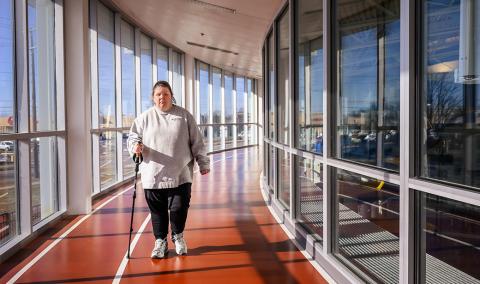Through the Alliance for Precision Health partnership, MU Health Care's board-certified interventional radiologists have access to the most sophisticated imaging tools — including MRI, CT scanners, ultrasound and angiographic equipment — to diagnose and treat patients. Our doctors collaborate with other specialists to treat a wide range of conditions inside the body without the need for major surgery.
Treatments
Interventional oncology: We offer minimally invasive treatments for cancer patients who cannot get major surgery. Treatments include:
- Y90 radioembolization: Radioactive beads are injected into the tumor's blood vessels to ensure the tumor receives the highest amount of radiation while minimizing damage to the normal tissue.
- Transarterial chemoembolization (TACE): Chemotherapy is injected into the blood vessels of the tumor specifically targeting the cancer cells and also reducing systemic side effects.
- Ablations: A probe placed in the tumor (just like doing a biopsy) using sophisticated imaging tools. When turned on the tip of the probe destroys the tumor tissue by freezing or burning it.
Dialysis access, fistulagrams and declots:
- Placing a catheter into a vein — typically in the neck or chest — to prepare a patient with kidney disease to receive dialysis.
- Fistulagrams and declot procedures to open or improve flow in grafts/fistulas used for dialysis. This is done by using balloons and suction catheters and allows the patient to continue dialysis with minimal interruption.
Prostate artery embolization (PAE): A small catheter is inserted into an artery of the groin or wrist and guided to the vessels that supply blood to the prostate gland. Small particles are injected into the vessels to reduce the blood supply to the prostate, causing the gland to shrink and soften, which reduces the need for frequent urination and improves other quality-of-life issues related to an enlarged prostate.
Uterine fibroid embolization: A small catheter is inserted into an artery of the groin or wrist and guided to the vessels that supply blood to the fibroids of the uterus. Small particles are injected into the vessels to reduce the blood supply to the fibroids, causing them to shrink, which reduces pain and bleeding during or between menstrual cycles.
Varicocele embolization: A small catheter is inserted into a vein in the neck or groin and guided to the enlarged vein in the scrotum. Small particles are injected into the vein to block the blood flow, which reduces pain and improves the patient's fertility.
Inferior vena cava (IVC) filter placements and retrievals: Filters are placed in the IVC — the vein that carries blood from the lower part of the body to the heart — to prevent blood clots in the legs from going to the heart or lungs. The filter is removed through another catheter-based procedure when it is no longer needed.
Venous procedures: Blocked veins or veins with reversed flow can be corrected with vein reconstruction, stenting and ablation procedures that can help patients suffering from chronic leg pain, swelling and fatigue.
Venous malformations: Abnormal blood vessels both superficial and deep in the tissues of the body, can be closed permanently through embolization or sclerotherapy. Learn about our specialty pediatric vascular abnormalities care.
Vertebroplasty and kyphoplasty: A hollow needle delivers a special bone cement into the fractured vertebra of patients with conditions such as osteoporosis. Kyphoplasty uses balloons to create the space to insert the cement. Both procedures reduce pain associated with the fracture and provide stability to the spine.
Transjugular intrahepatic portosystemic shunt (TIPS) and balloon-occluded retrograde transvenous obliteration (BRTO): These treatments are for portal hypertension, a condition that stems from liver disease. TIPS uses a shunt to create an artificial passageway between the major veins of the liver. BRTO uses a balloon to block dilated vessels of the stomach that are at risk of rupturing.
Palliative care: Long-term drainage catheters can be placed and safely used at home or during hospice care to relieve symptoms of patients suffering from fluid build-up caused by end-stage cancer. Nerve-block procedures help with pain relief.
Pulmonary angiography and thrombectomy: Blood clots in the lungs can be life-threatening. Thrombectomies or thrombolysis remove blood clots from the arteries of the lung and improve blood flow/reduce strain on heart.
Trauma and acute care procedures: Using catheter-based procedures, blocked arteries of the legs or arms can be opened and damaged blood vessels can be blocked after patients suffer a serious injury.
Chest ports and PICC lines: A tube much like an IV line is placed in the patient's chest or arm to allow for infusion of medications and fluid. Chest ports and PICC lines can be used for extended periods.
Biliary and kidney drains: A tube is placed to relieve a bile blockage or to relieve urinary obstruction or facilitate kidney stone removal.
Image-guided biopsies and drainages: A CT scanner or ultrasound finds the correct location to collect a tissue sample or drain fluid.



